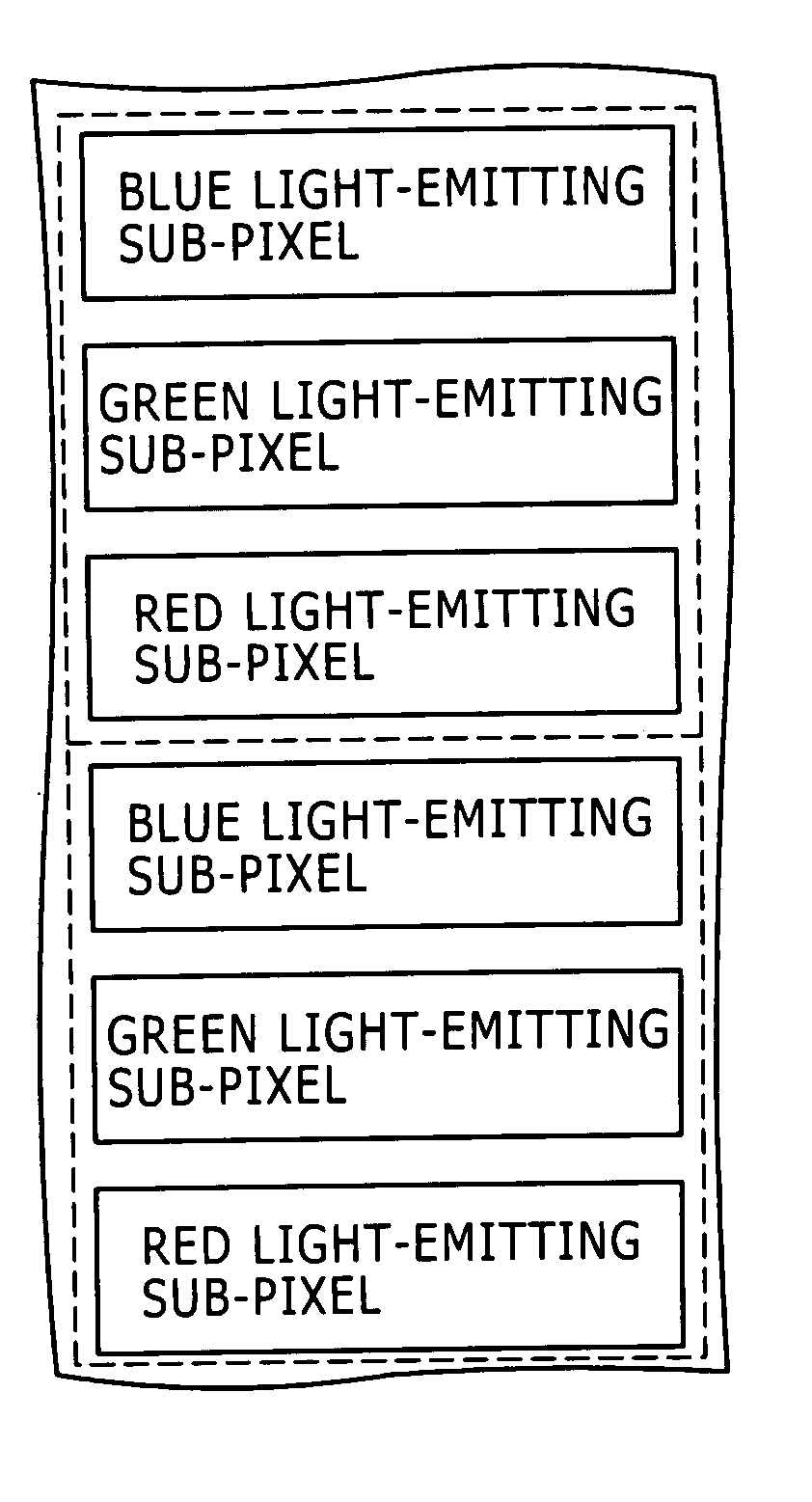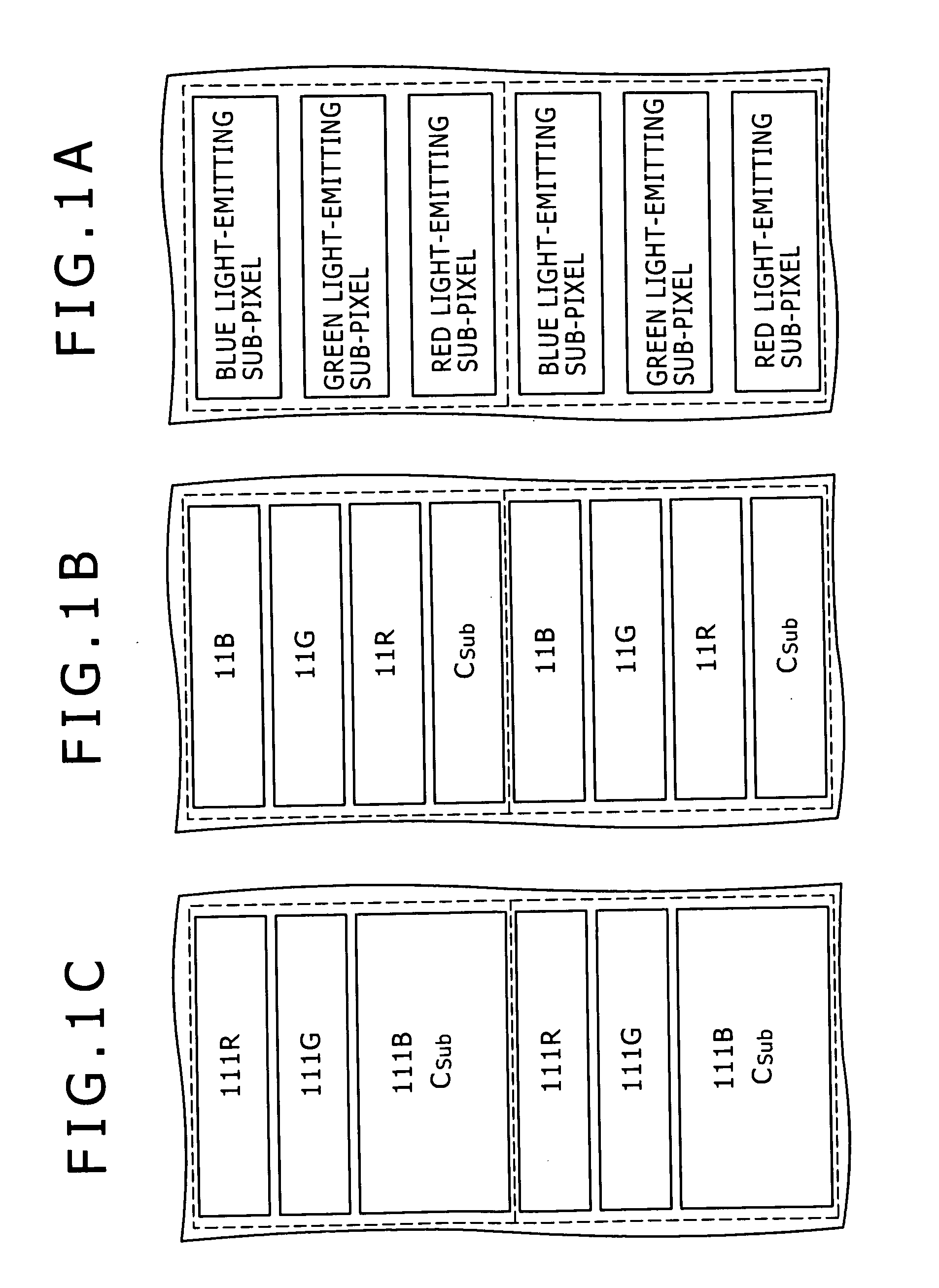Organic electroluminescence display
- Summary
- Abstract
- Description
- Claims
- Application Information
AI Technical Summary
Benefits of technology
Problems solved by technology
Method used
Image
Examples
first embodiment
[0071]A first embodiment of the present invention relates to an organic EL display according to the first mode of the present invention. FIG. 1A is a conceptual diagram (plan view) of a plane occupied by one pixel. FIG. 1B is a conceptual diagram (plan view) of a plane occupied by three drive circuits and one auxiliary capacitor CSub. One pixel is surrounded by a dashed line, and each of the sub-pixels, drive circuits, and auxiliary capacitors is surrounded by a full line. Two pixels are indicated in each of FIGS. 1A, 1B, and 1C.
[0072]Organic EL displays of the first embodiment and a second embodiment of the present invention, which will be described later, include plural pixels. Furthermore, each pixel is composed of plural sub-pixels (in the first embodiment and the second embodiment to be described later, three sub-pixels of a red light-emitting sub-pixel, a green light-emitting sub-pixel, and a blue light-emitting sub-pixel). Each of the sub-pixels is formed of an organic electr...
second embodiment
[0096]The second embodiment of the present invention relates to an organic EL display according to the second mode of the present invention. FIG. 1C is a conceptual diagram (plan view) of a plane occupied by one pixel in the second embodiment.
[0097]The organic EL display of the second embodiment includes plural pixels. Furthermore, each pixel is composed of plural sub-pixels (also in the second embodiment, three sub-pixels of a red light-emitting sub-pixel, a green light-emitting sub-pixel, and a blue light-emitting sub-pixel). Each of the sub-pixels is formed of an organic electroluminescence element (organic EL element 10) that has a structure arising from stacking a drive circuit 111 and an organic electroluminescence light-emitting part (light-emitting part ELP) connected to this drive circuit 111.
[0098]In addition, in the plural sub-pixels included in one pixel, the size of one of the drive circuits of these plural sub-pixels (e.g. a drive circuit 111B of the blue light-emittin...
PUM
 Login to View More
Login to View More Abstract
Description
Claims
Application Information
 Login to View More
Login to View More - R&D
- Intellectual Property
- Life Sciences
- Materials
- Tech Scout
- Unparalleled Data Quality
- Higher Quality Content
- 60% Fewer Hallucinations
Browse by: Latest US Patents, China's latest patents, Technical Efficacy Thesaurus, Application Domain, Technology Topic, Popular Technical Reports.
© 2025 PatSnap. All rights reserved.Legal|Privacy policy|Modern Slavery Act Transparency Statement|Sitemap|About US| Contact US: help@patsnap.com



